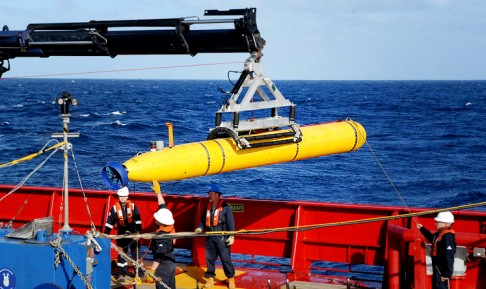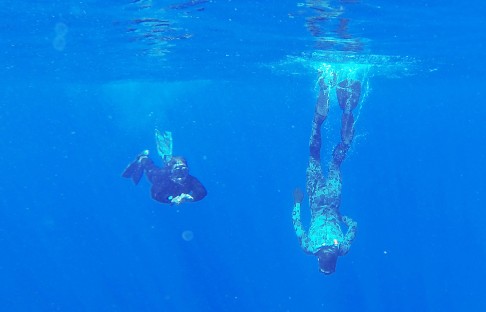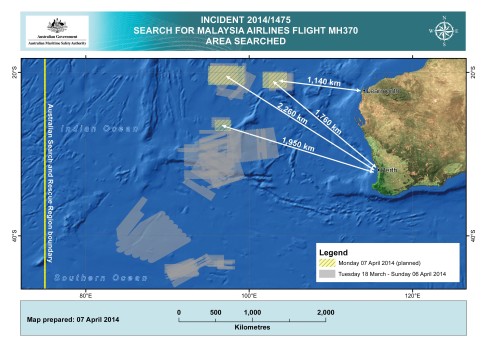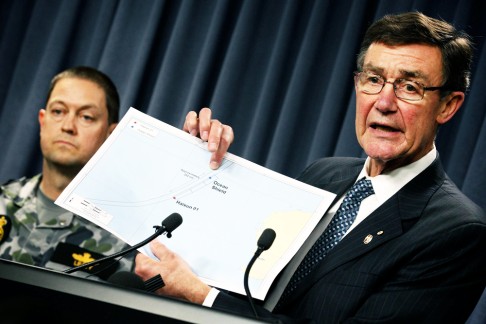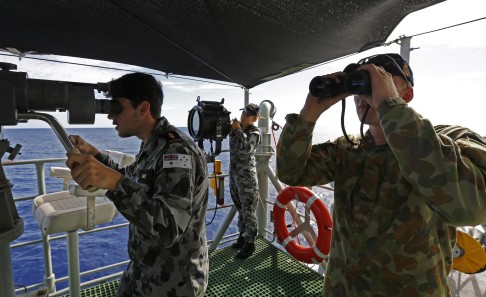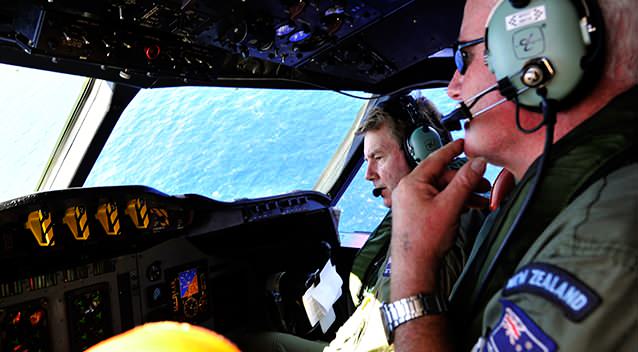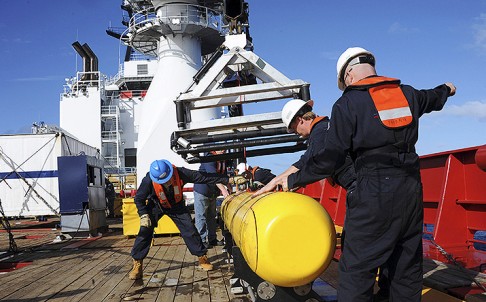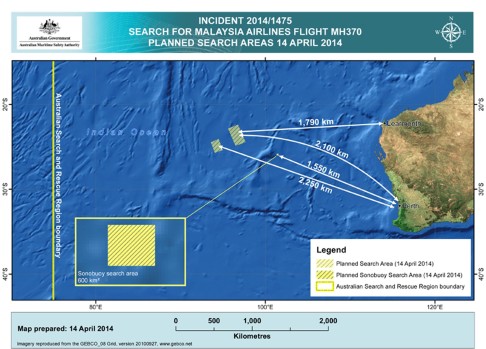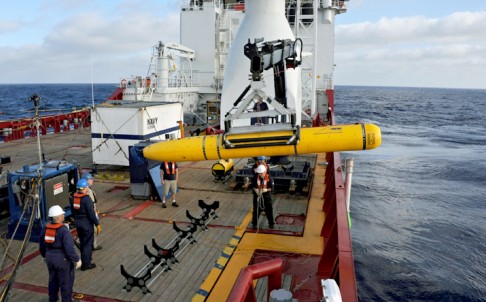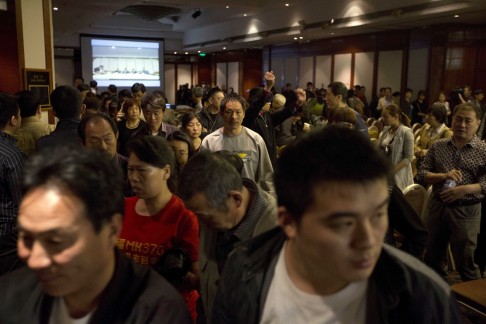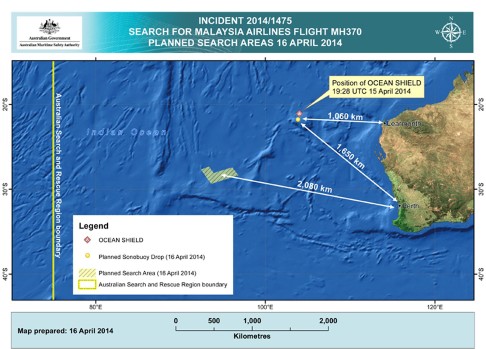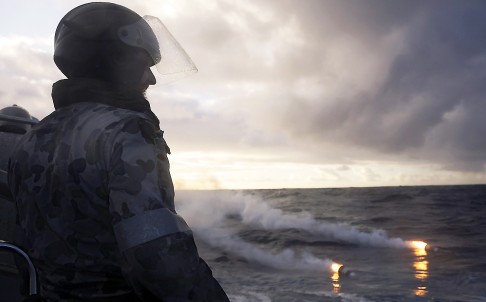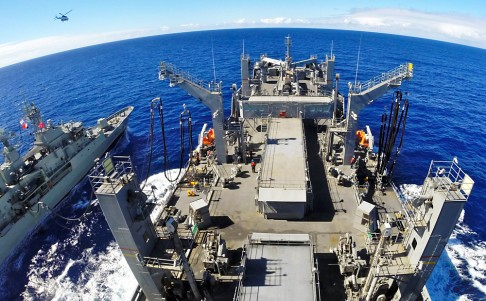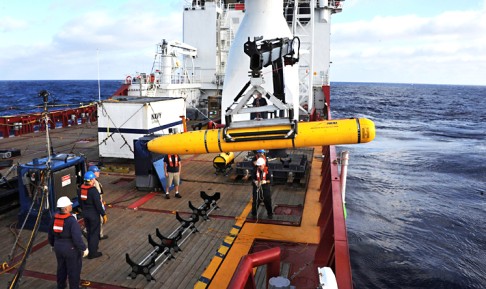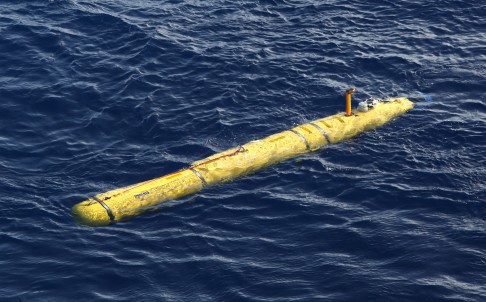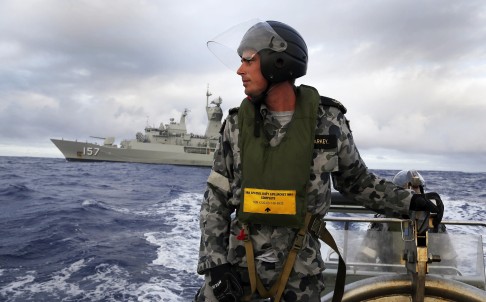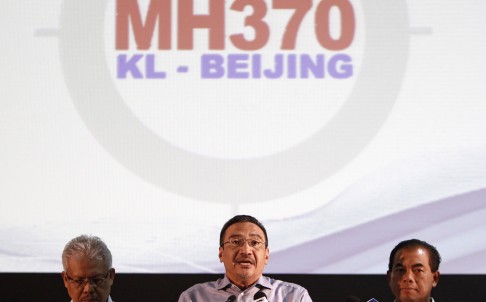Exclusive: Malaysia starts investigating confused initial response to missing jet
By Siva Govindasamy and Niluksi Koswanage
KUALA LUMPUR Fri Apr 11, 2014 10:42am EDT
<iframe src="//www.youtube.com/embed/cAd_OPUGnJ8?rel=0" allowfullscreen="" frameborder="0" height="315" width="560"></iframe>
Australian PM says searchers confident of position of MH370's black boxes
(Reuters) - Malaysia's government has begun investigating civil aviation and military authorities to determine why opportunities to identify and track Malaysia Airlines Flight MH370 were missed in the chaotic hours after it vanished, two officials said.
The preliminary internal enquiries come as tensions mount between civilian and military authorities over who bears most responsibility for the initial confusion and any mistakes that led to a week-long search in the wrong ocean.
"What happened at that time is being investigated and I can't say any more than that because it involves the military and the government," a senior government official told Reuters.
In an interview with Reuters last weekend, Malaysia Airlines Chief Executive Ahmad Jauhari Yahya said internal enquiries were under way, although he declined to give details.
A government spokesman did not respond to Reuters questions over whether an investigation had been launched. The senior government source said it was aimed at getting a detailed picture of the initial response. It was unclear which government department was in charge or whether a formal probe had been opened.
Malaysia's opposition coalition has demanded a parliamentary inquiry into what happened on the ground in those first few hours. Government officials have said any formal inquiry should not begin until the flight's black box recorders are found.
The Boeing 777 was carrying 227 passengers and 12 crew when it disappeared on March 8. Malaysia says it believes the plane crashed into the southern Indian Ocean after being deliberately diverted from its Kuala Lumpur-to-Beijing route.
A search effort is taking place well out to sea off the Australian city of Perth to try to locate any wreckage as well as the recorders which may provide answers to what happened onboard.
MECHANICAL PROBLEM ASSUMED
Interviews with the senior government source and four other civilian and military officials show that air traffic controllers and military officials assumed the plane had turned back to an airport in Malaysia because of mechanical trouble when it disappeared off civilian radar screens at 1:21 a.m. local time.
That assumption took hold despite no distress call or other communication coming from the cockpit, which could have been a clue that the plane had been hijacked or deliberately diverted.
The five sources together gave Reuters the most detailed account yet of events in the hour after the plane vanished. All declined to be identified due to the sensitivity of the issue and because they were not authorized to speak to the media.
"The initial assumption was that the aircraft could have diverted due to mechanical issues or, in the worst case scenario, crashed," said a senior Malaysian civilian source. "That is what we were working on."
Officials at Malaysia's Department of Civil Aviation, which oversees air traffic controllers, the Defence Ministry and the air force directed requests for comment to the prime minister's office, which did not respond.
One senior military official said air traffic control had informed the military at around 2:00 a.m. that a plane was missing. The standard operating procedure was to do so within 15 minutes, he said. Another military source said the notification was slow in coming, but did not give a time.
Civil aviation officials told Reuters their response was in line with guidelines, but they did not give a specific time for when the military was informed.
Once alerted, military radar picked up an unidentified plane heading west across peninsular Malaysia, the senior military official said. The air force has said a plane that could have been MH370 was last plotted on military radar at 2:15 a.m., 320 km (200 miles) northwest of the west coast state of Penang.
PLANE TRACKED IN REAL TIME?
Top military officials have publicly said Malaysia's U.S. and Russian-made fighter jets stationed at air force bases in Penang and the east coast state of Kuantan were not scrambled to intercept the plane because it was not viewed as "hostile".
"When we were alerted, we got our boys to check the military radar. We noticed that there was an unmarked plane flying back but (we) could not confirm (its identity)," said the senior military source. "Based on the information we had from ATC (Air Traffic Control) and DCA (Department of Civil Aviation), we did not send up any jets because it was possibly mechanical problems and the plane might have been going back to Penang."
The military has not publicly acknowledged it tracked the plane in real time as it crossed back over the peninsula.
While fighter jets would not have had enough fuel to track a Boeing 777 for long and darkness would have complicated the operation, they could have spotted MH370 flying across peninsular Malaysia and possibly beyond, aviation experts said.
That could have enabled Malaysia to get a better fix on where it was headed and thus possibly ruled out the need to search off its east coast in the Gulf of Thailand and the South China Sea, around where MH370 was last seen on civilian radar.
Fighter pilots should be able to scramble within minutes, aviation experts said, although the time can vary widely from country to country. In Europe and North America, radar experts said controllers were trained to coordinate across civil and military lines and across borders.
They said military jets would have been scrambled, as they were from a Greek air force base in 2005 when a Helios Airways jet with 121 people on board lost contact over the Aegean Sea after suffering a decompression that knocked out the pilots. Two F-16 jets could see the captain's seat empty and the first officer slumped over the controls. The plane crashed in Greece after running out of fuel.
"This raises questions of coordination between military and civil controllers," former pilot Hugh Dibley, a fellow of the Royal Aeronautical Society in London, said of Malaysia's response.
BUREAUCRATIC DELAYS
Another contentious issue has been whether the military was slow in passing on its radar data that showed an unidentified plane had re-crossed the Malay peninsula.
Two civilian aviation officials said military bureaucracy delayed the sharing of this information, although they gave no precise timeframe for when it was handed over.
"The armed forces knew much earlier that the aircraft could have turned back. That is why the search was expanded to include the Strait of Malacca within a day or two," said a second senior civilian source, who was familiar with the initial search, referring to the narrow stretch of water between Indonesia and Malaysia, on the western side of the peninsula.
"But the military did not confirm this until much later due to resistance from senior officers, and the government needed to step in. We wasted our time in the South China Sea."
Government sources have said Prime Minister Najib Razak had to force the military to turn over its raw radar data to investigators during the first week after the flight's disappearance.
Military officials have said they did not want to risk causing confusion by sharing the data before it had been verified, adding this was why Air Force chief Rodzali Daud went to the air base in Penang on March 9, where the plane's final radar plot was recorded.
On the same day, Rodzali said the search was being expanded to the west coast, although Reuters has not been able to determine if that meant the data was being shared with other Malaysian officials.
On March 12, four days after Flight MH370 disappeared, Rodzali told reporters there was still no confirmation the unidentified plane had been Flight MH370, but added Malaysia was sharing the radar data with international civilian and military authorities, including those from the United States.
Authorities called off the search in the South China Sea on March 15 after Razak said satellite data showed the plane could have taken a course anywhere from central Asia to the southern Indian Ocean.
FEARS OF LOSING JOBS
A sixth source, a senior official in the civil aviation sector, said the plane's disappearance had exposed bureaucratic dysfunction in Malaysia, which has rarely been subject to such international demands for transparency. "There was never the need for these silos to speak to one another. It's not because of ill intent, it's just the way the system was set up," the official said.
The accounts given to Reuters reveal growing tensions between civilian officials, the military and Malaysia Airlines over whether more could have been done in those initial hours.
One of the Reuters sources said military officials in particular were concerned they could lose their jobs.
Tensions have also emerged between the government and state-controlled Malaysia Airlines.
Malaysia's defence minister and acting transport minister, Hishammuddin Hussein, said in an interview with China's CCTV that the airline would have to "answer" for its mistakes in dealing with the relatives of the some 150 Chinese passengers on board.
In his interview with Reuters, Malaysia Airlines chief Ahmad Jauhari played down talk of tension, saying there were "slight differences of opinion."
(Additional reporting by Tim Hepher in PARIS; Writing by Stuart Grudgings; Editing by Alex Richardson and Dean Yates)

